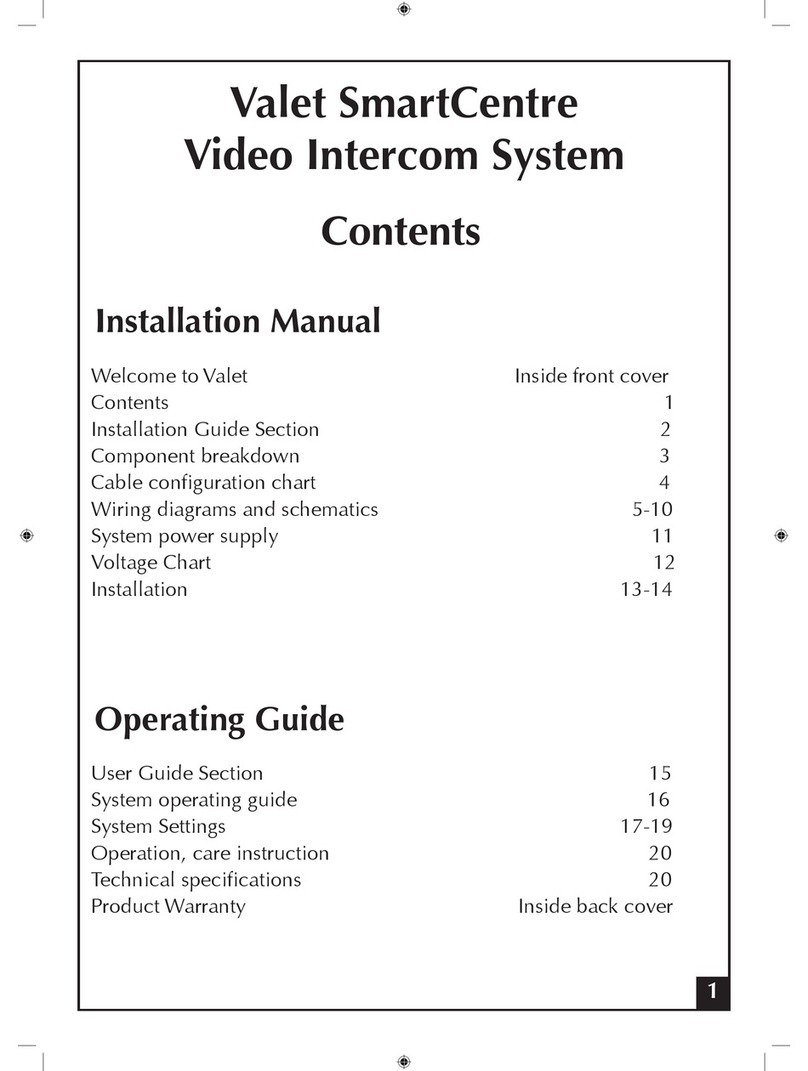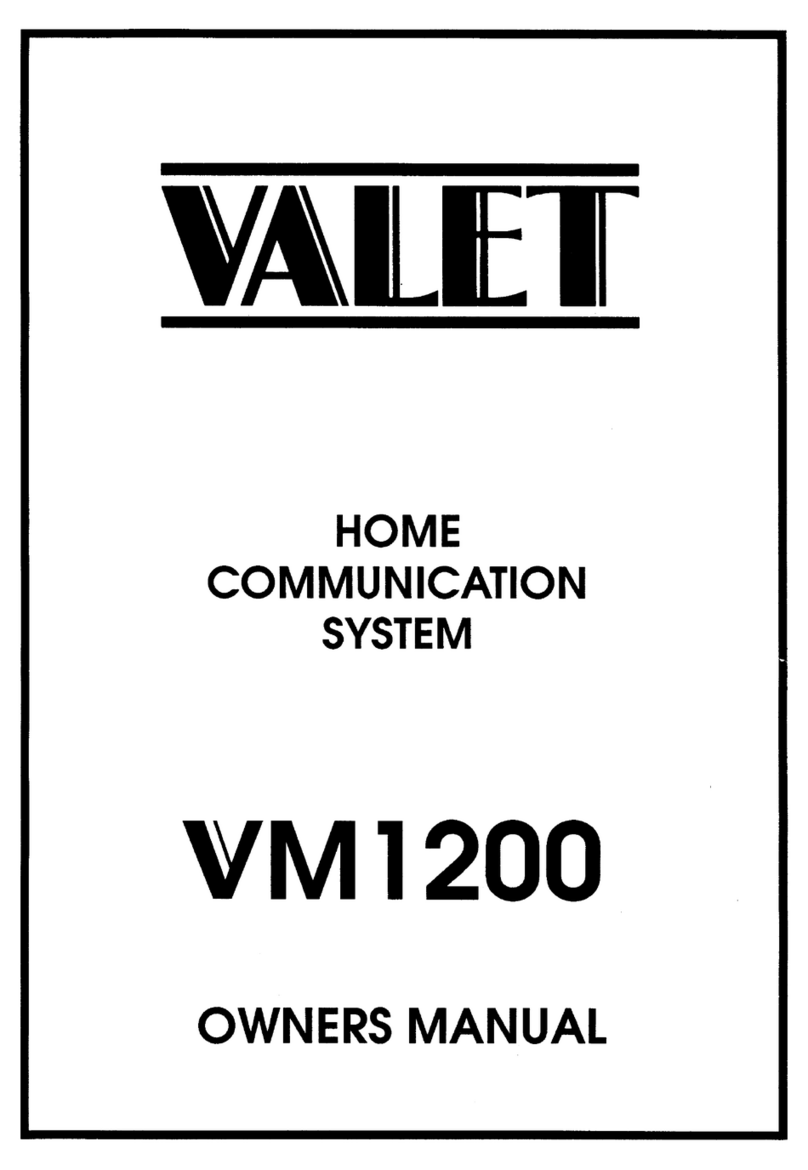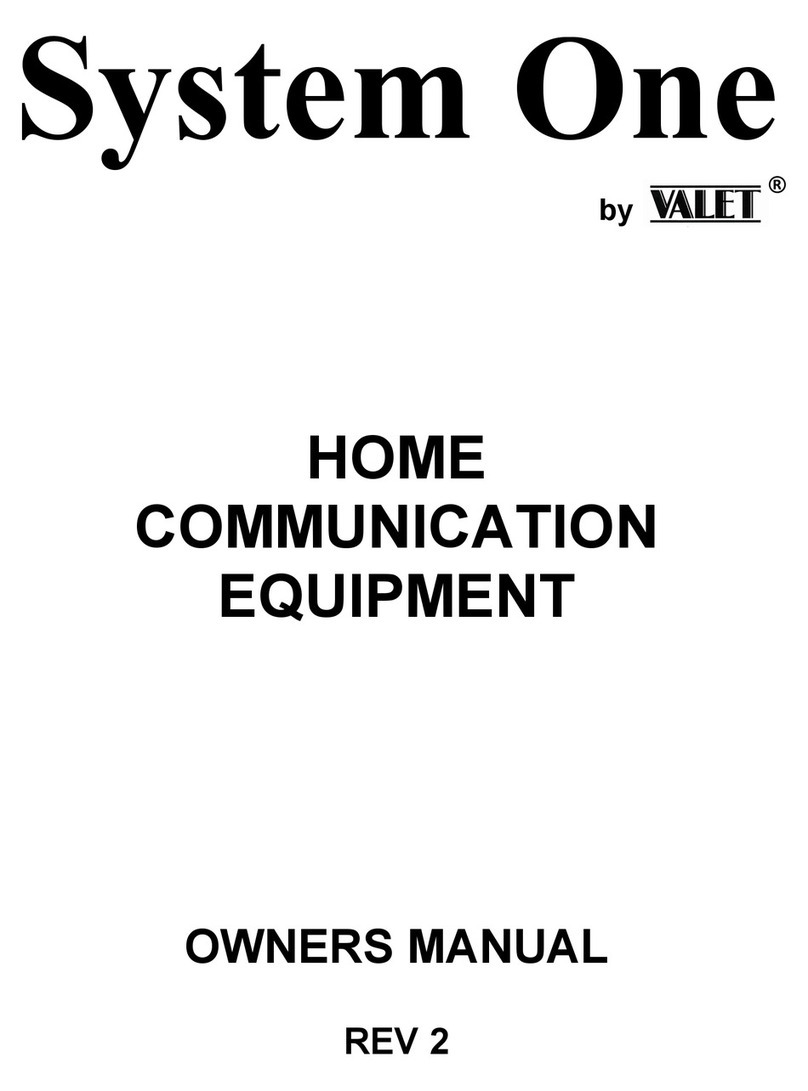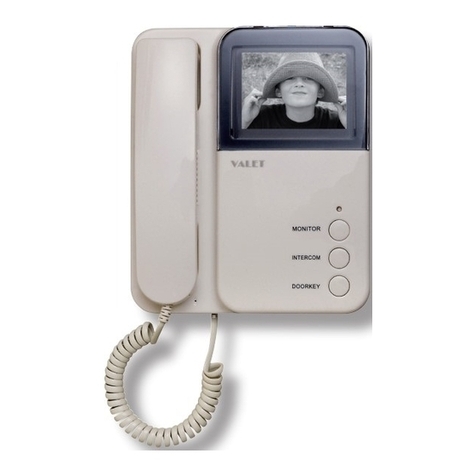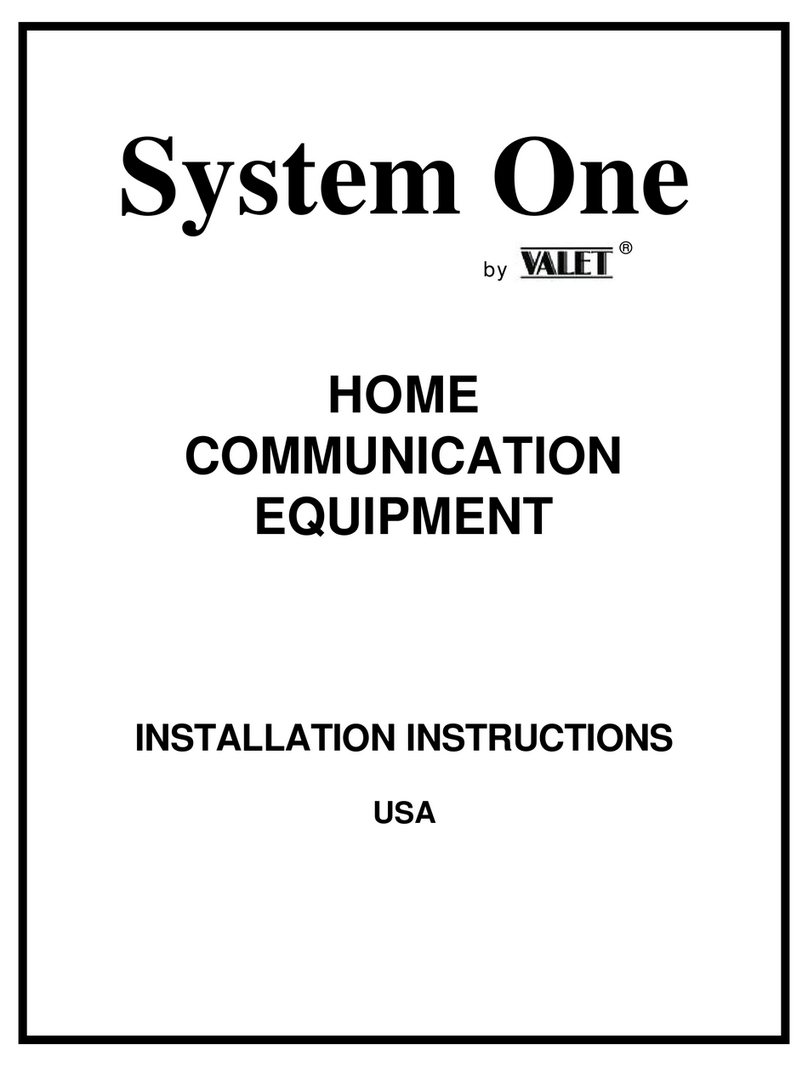
WHERE TO RUN CABLE
Cables can be run either:
•In the roof space
•In false ceilings/bulkhead area
•Through &/or around external walls
•Under floors (subject to access
being available)
Note:
Intercom cables should be run as
far away from AC wiring as
practicality permits.
Avoid running intercom cable in
parallel to AC or any other type of
wiring. (Running across at right
angles is OK where necessary)
All aerial wires should be taken to
the highest and most accessible
point in the roof.
Allow additional cable at each
station for the purpose of term-
ination.
In the case of cavity brick walls,
ensure the wires are pulled through
one of the holes at the rear of the
wall box.
CABLE
WHERE TO RUN CABLE
WHAT CABLE TO USE ?
General
System One is designed to operate
using 8 core cable; however,
operation is also possible using 6
core cable with the disadvantage
that music will be muted at all room
stations while private communication
is in progress.
The system may be Star Wired from
acentralpoint orLoop Wiredhowever
the number of stations on a loop is
governed by the length of the loop,
and also whether or not a standby
battery is being used in conjunction
with the supply. See section
“Maximum Cable Lengths”.
Important Note: Different cables
have different characteristics hence
it is recommended that ‘Valet Cable’
be used on all new installations.
Many other cables will work
acceptably however responsibility
cannot be taken for problems that
arise from the use of other cables.
The proper use of shielded cable on
VLC & TC terminals will prevent
“clicks & pops” caused by Control
Voltage changes from being
induced onto audio lines.
Power Supply
Heavy duty ‘Figure 8’ cable (24 x
0.20mm or better) should be run
from the Power Supply to the
master. (Power Supply to any room
station if a master is not fitted)
AM Aerial
The coaxial cable supplied with the
master is to be run from the master
to the highest point in the roof
where the antenna tail provided (or
a car radio antenna) must be
plugged into the socket at the end
of the cable. The plug at the master
end of the cable must be cut off.
Additional AM coax leads can be
plugged into one another if
additional length is required.
Exit program mode by pressing
the “CANCEL/CLEAR” button.
Note: Single and Double Digit
format cannot be mixed in one
system.
- Each station is to be individually
programmed to the same format.
- Repeated pressing of the “AUX”
button while in program mode will
toggle between Single and Double
Digit formats.
KEYPAD BACKLIGHTING
The Room Stations have Keypad
backlighting which can be enabled
and disabled by pressing the
“DOOR” button while in Program
mode, as outlined above.
DOOR STATION ADJUSTMENTS
There are three adjustments on the
door station which may require fine
tuning after installation.
NOTE: A flat bladed screw driver
with a blade width of between 2mm
and 2.4mm is required for these
adjustments.
The use of an incorrect screw driver
will result in the pot being damaged.
Door Station Volume
Speaker volume at the door station
is adjusted by means of a miniature
trim pot (VR1) located in the center
of the circuit board.
Turning this pot will vary the
speaker volume.
This adjustment can be made while
someone is communicating to the
door station from one of the internal
stations or while the chime is
activated.
Chime Volume
Chime volume is adjusted by
means of a miniature trim pot (VR2)
situated at the bottom of the circuit
board as indicated below.
Turning this pot will vary the chime
volume throughout the system.
This pot should be adjusted so the
chime volume comes through at an
acceptable level at an internal room
station with its slide volume control
set to around level 4 or 5.
Microphone Gain
The microphone gain pot (VR3) is
generally set half way and would
rarely require adjustment.
The microphone level can be turned
down where the door station causes
feedback in a room station due to
close proximity or can be turned up
if the communication level at
internal stations is too low.
CHIME
VOLUME
SPEAKER
VOLUME
POS
NEG
COM1
COM2
TC
VLC
SHLD
CH
VR3
VR2
VR1
MICROPHONE
GAIN
U5






